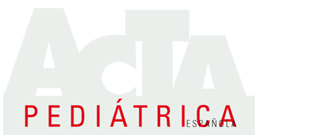Información adicional
- Num_publicacion 78(1-2)
-
Resumen_ingles
Aim: To analyse the level of knowledge of paediatric advanced life support (ALS) among paediatric personnel of the island of Lanzarote (Spain) and to evaluate the efficacy of ALS courses on the island.
Method: A cross-sectional analytical study was carried out on paediatric and neonatal ALS training courses conducted on Lanzarote from 2016 to 2018. Scores were collected during the theoretical evaluations performed at the beginning and end of the course as well as during the practical stage. The scores were evaluated according to multiple sociodemographic variables describing the trainees. The Wilcoxon signed-rank test was applied to compare the theoretical scores before and after the course and a multivariate linear regression model was used to examine the relationships between the scores and the different sociodemographic variables.
Results: A total of 77 students participated in the courses, and the median score increased significantly (p <0.001) from the initial to the final evaluation (from 14 to 18 points out of 20). In the practical evaluation of both basic and advanced paediatric and neonatal life support, the median scores exceeded 4 out of 5, with the minimum requirement being 3. Medical doctors scored higher than nurses in performing both basic and advanced life support techniques (p < 0.05). Younger trainees performed better ALS (p < 0.05).
Conclusions: Advanced paediatric and neonatal life support courses are effective short-term teaching methods for the theoretical and practical training of health professionals. Future studies are needed to determine their medium- and long-term effects. - Palabras_clave_ingles Heart arrest cardiopulmonary resuscitation pediatrics advanced cardiac life support education
- Todos_autores M. Inguanzo-Ortiz1, I. Inguanzo2, J.L. Aparicio Sánchez1
- autores listados M. Inguanzo-Ortiz, I. Inguanzo, J.L. Aparicio Sánchez
-
Correspondecia
M. Inguanzo Ortiz. Servicio de Pediatría. Hospital Dr. José Molina Orosa. Carretera Arrecife-Tinajo, km 1,3. 35550 Arrecife (Las Palmas). Correo electrónico: maritxueps@yahoo.es
- Titulo_ingles Impact of advanced paediatric cardiopulmonary resuscitation courses conducted on Lanzarote island
- Centros_trabajo 1Servicio de Pediatría. Hospital Dr. José Molina Orosa. Arrecife (Las Palmas). 2Doctora en Ciencias Políticas. Universidad Loyola Andalucía. Sevilla
- Publicado en Acta Pediatr Esp. 2020; 78(1-2): e32-e37
- copyright ©2020 Ediciones Mayo, S.A.
- Fecha recepcion 28/01/19
- Fecha aceptacion 10/05/19
- Tipo de Artículo Clínico (Microdatos) Evaluation Studies
Información adicional
- Num_publicacion 77(9-10)
-
Resumen_ingles
Background: individuals with sickle cell trait (SCT) are healthy and asymptomatic but this condition implies the risk of having a child with sickle cell disease or SCT and has some morbidity that should be known.
Objective: we conducted a cross-sectional study to evaluate knowledge and understanding in families with infants newly diagnosed with SCT after professional counselling. After explanation to caregivers of referred infants with SCT from December 2014 to May 2015, families were contacted after 6 months to complete a survey to assess caregivers’ SCT understanding.
Results: 56 caregivers (52,8%) agreed to complete the survey. About eighty percent (80%) understood the genetic condition of SCT and the risk of having a child affected with sickle cell disease. Fifty five percent knew that the hemoglobin alteration was responsible for SCT. Twenty-one surveyed believed their blood count was abnormal because of SCT. Forty eight percent (48%) had consulted their pediatrician after the diagnosis, while 44,4% have not consulted or were not satisfied with the information from the general pediatrician. Seventy-eight percent (78,6%) understood the importance of informing the anesthetist in case of cardiac intervention. Sixty percent (60,7 %) would go to an ophthalmologist in case of eye trauma with hemorrhage. Sixty-two percent (62 %) consider that other types of anemia had been excluded. Thirteen families believe that SCT can develop into sickle cell disease in the future.
Conclusions: The results show severe deficiencies in the asimilation of the relevant information by the caregivers. Future studies are badly needed to determine effective strategies for communicating SCT information and to identify opportunities for education within community and medical settings. - Palabras_clave_ingles Risks associated with sickle cell trait universal neonatal screening of sickle cell disease health education evaluation of comprehension
- Todos_autores A.M. Haro Díaz, E.J. Bardón Cancho, B. Ponce Salas, A. Andrea, M. García Morín, E. Cela de Julián
- autores listados A.M. Haro Díaz, E.J. Bardón Cancho, B. Ponce Salas, A. Andrea, M. García Morín, E. Cela de Julián
-
Correspondecia
E.J. Bardón Cancho. Hospital Materno Infantil Gregorio Marañón. C/O'Donnell 48-50. 28009 Madrid.Correo electrónico: edubc15@hotmail.com
- Titulo_ingles Knowledge after professional hemoglobinopathy counseling in families with infants newly diagnosed of sickle cell trait
- Centros_trabajo Servicio de Hematología Infantil. Hospital General Universitario Gregorio Marañón. Madrid
- Publicado en Acta Pediatr Esp. 2019; 77(9-10): 133-138
- copyright ©2019 Ediciones Mayo, S.A.
- Fecha recepcion 26/09/17
- Fecha aceptacion 05/09/18
- Tipo de Artículo Clínico (Microdatos) Evaluation Studies
Información adicional
- Num_publicacion 76(7-8)
-
Resumen_ingles
Introduction: Ultrasound imaging is an examination that must be performed following a clear clinical indication. Otherwise it causes an increase of the work load and can generate false expectations in the parents. In pediatrics, there is a lack of guidelines for ultrasound indications.Materials and methods: Observational prospective study over 3 years. The ultrasounds images and the respective referral documents sent by primary care pediatricians at a county level were systematically collected during the first year. After that period the indications and the usefulness of the ultrasound imaging with respect to the proposed clinical indication were analyzed. Subsequently the pediatricians of the area were trained on the rationale of ultrasound usefulness as a diagnostic tool by means of a guideline of adequate and uncertain indications. The following two years were compared with the first one in terms of variation in the relative number of indications of low diagnostic value.Results: In the two years following the training of the primary care pediatricians, a sustained and statistically significant decrease (p <0.01) in ultrasound referrals with a low diagnostic value was observed. At the same time an increase in the total number of ultrasounds was observed.Conclusions: The introduction of a guideline of indications for ultrasound imaging and their dissemination to and training of the primary care pediatricians can help optimize the use of clinical ultrasound imaging.
- Palabras_clave_ingles Ultrasonography Education Primary health care Diagnostic services
- Todos_autores S.O. Schneider, A. Foguet i Vidal, F. Campillo i López
- autores listados S.O. Schneider, A. Foguet i Vidal, F. Campillo i López
-
Correspondecia
S.O. Schneider. Equip Pediàtric Territorial de la Garrotxa. Hospital d’Olot i Comarcal de la Garrotxa. Avda. dels Països Catalans, 86. 17800 Olot (Girona).
Correo electrónico: soschneider@hospiolot.cat - Titulo_ingles Referral for ultrasound imaging in primary care pediatrics: Usefulness of a guideline for clinical indications
- Centros_trabajo Equipo Pediátrico Territorial de la Garrotxa. Hospital d’Olot i Comarcal de la Garrotxa. Olot (Girona)
- Publicado en Acta Pediatr Esp. 2018; 76(7-8): e93-e97
- copyright ©2018 Ediciones Mayo, S.A.
- Fecha recepcion 25/07/17
- Fecha aceptacion 13/09/17
- Tipo de Artículo Clínico (Microdatos) Observational Study














